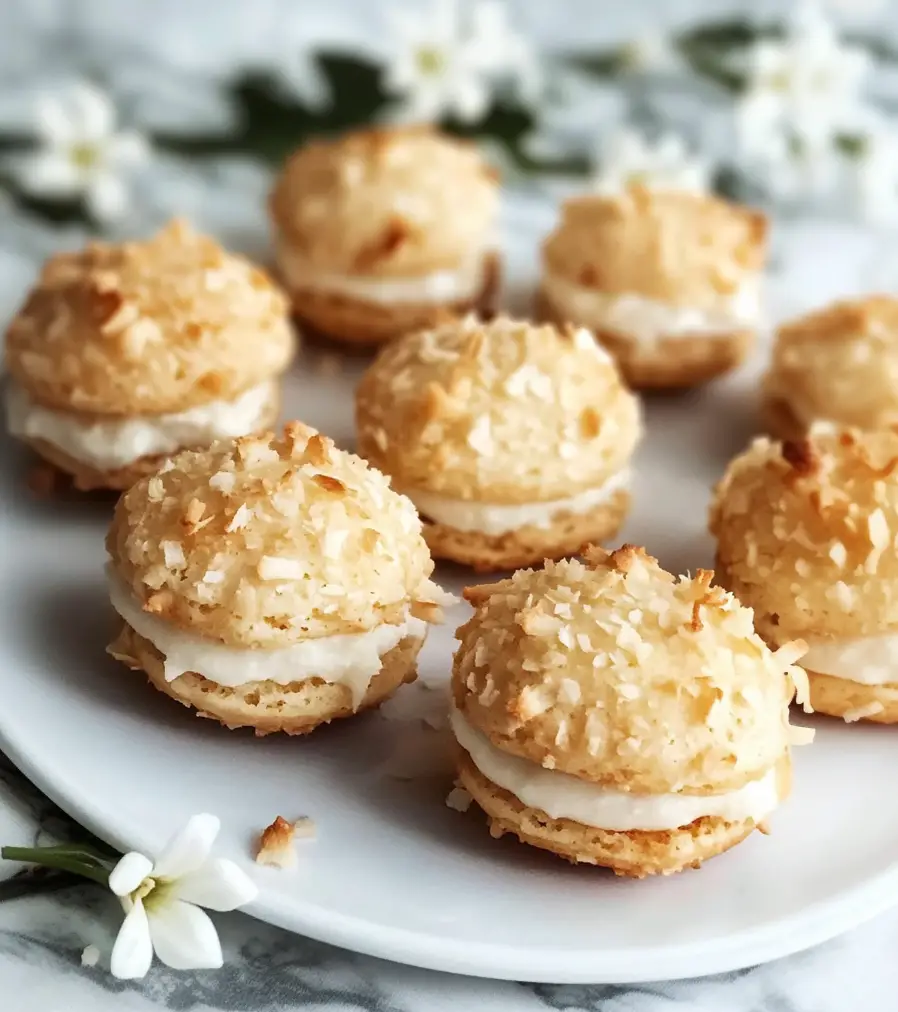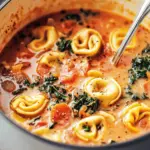These award-winning Coconut Macaroons are delightfully chewy on the inside with a crisp, golden exterior. Simple to make with just five ingredients, they’re perfect for any occasion. This recipe has earned multiple first-place ribbons at state fairs, making it a trusted favorite among home bakers.
Full Recipe:
Ingredients
- ⅔ cup all-purpose flour
- 5 ½ cups flaked coconut
- ¼ teaspoon salt
- 1 (14-ounce) can sweetened condensed milk
- 2 teaspoons vanilla extract
Directions
- Preheat oven to 350°F (175°C). Line cookie sheets with parchment paper or aluminum foil.
- In a large bowl, stir together the flour, coconut, and salt.
- Add the sweetened condensed milk and vanilla extract. Mix well using your hands until fully blended.
- Use an ice cream scoop to drop dough onto the prepared cookie sheets, forming golf ball-sized mounds.
- Bake for 12 to 15 minutes, or until the coconut is toasted and the edges are golden brown.
- Allow to cool on the baking sheet for a few minutes before transferring to wire racks to cool completely.
Nutritional Facts (Per Serving)
- Calories: 287
- Total Fat: 12g
- Saturated Fat: 10.8g
- Cholesterol: 11.1mg
- Sodium: 186.8mg
- Total Carbohydrates: 40.7g
- Dietary Fiber: 3.5g
- Sugars: 30.3g
- Protein: 4.4g
History and Cultural Significance
The macaroon has its origins traced back to Europe, particularly Italy and France. The name “macaroon” comes from the Italian word “maccarone” or “maccherone,” meaning paste, referring to the almond paste used in the original versions. However, coconut macaroons emerged as a variation that substitutes the almond with shredded coconut. This change likely came about due to coconut’s availability in tropical climates and its affordability compared to almonds.
Coconut macaroons have become an integral part of Jewish cuisine as well, especially during Passover, because they can be made without flour or leavening agents, fitting kosher dietary laws during the holiday. Their simplicity and deliciousness have made them a staple in bakeries and home kitchens alike.
Why Coconut Macaroons Are So Popular
One of the key reasons for the popularity of coconut macaroons is their unique texture. They are chewy and moist on the inside, while the exterior toasts to a golden, slightly crisp shell during baking. This contrast is satisfying to the palate. Additionally, coconut macaroons offer a naturally sweet and fragrant flavor profile that coconut lovers find irresistible.
Another appeal lies in their simplicity and versatility. The basic ingredients are minimal: shredded coconut, sweetened condensed milk, flour, salt, and vanilla extract. This simplicity means that even novice bakers can achieve impressive results. Moreover, macaroons can be easily customized. Some variations include dipping them in chocolate, adding nuts, or incorporating different extracts like almond or coconut rum for enhanced flavor.
Nutritional Value and Health Considerations
Coconut macaroons provide some nutritional benefits due to the coconut content. Coconut is a source of dietary fiber, which supports digestive health, and contains medium-chain triglycerides (MCTs), a type of fat that may offer quick energy and metabolic benefits. However, coconut macaroons made with sweetened condensed milk are high in sugar and saturated fat, so they should be enjoyed in moderation.
The recipe’s nutritional profile includes a significant calorie count per serving, primarily from fats and sugars, so they are best suited as an occasional indulgence rather than an everyday snack. For those with dietary restrictions, there are alternative recipes that replace sweetened condensed milk with coconut cream or natural sweeteners to reduce sugar content, although these may affect texture and flavor.
How to Store and Serve Coconut Macaroons
Proper storage is essential to maintain the freshness and texture of coconut macaroons. After baking and cooling, they should be stored in an airtight container to prevent them from drying out or absorbing moisture from the environment. At room temperature, they can last about 3 to 5 days, while refrigeration can extend their shelf life up to two weeks.
Coconut macaroons are excellent on their own or paired with other desserts. They complement coffee, tea, or dessert wines well, making them a perfect treat for afternoon gatherings or after-dinner sweets. For a luxurious touch, some people dip macaroons in melted chocolate or drizzle chocolate on top, enhancing both flavor and presentation.
Tips for Perfect Coconut Macaroons
Achieving the perfect coconut macaroon comes down to a few key tips:
-
Use Fresh or Good Quality Coconut: Freshly shredded coconut or high-quality packaged flaked coconut will deliver the best flavor and texture. Avoid using sweetened coconut flakes that are overly large or dry.
-
Don’t Overmix: When combining the wet and dry ingredients, mix until just combined. Overmixing can cause the macaroons to become dense.
-
Use an Ice Cream Scoop: To ensure even-sized cookies and consistent baking, using an ice cream scoop is ideal.
-
Watch the Baking Time Closely: Overbaking can dry out the macaroons, while underbaking will leave them too soft. Look for a golden brown exterior with lightly toasted coconut.
-
Experiment with Flavors: Vanilla extract is classic, but feel free to try almond extract, coconut rum, or even a pinch of cinnamon or cardamom to add a unique twist.
Variations and Creative Ideas
Coconut macaroons are a flexible base for creative adaptations. Some popular variations include:
-
Chocolate-Dipped Macaroons: Dip half of each cooled macaroon in melted dark, milk, or white chocolate and let them set on parchment paper. This adds a rich contrast to the sweet coconut.
-
Nutty Macaroons: Fold in chopped nuts such as almonds, pecans, or macadamia nuts to add crunch and depth.
-
Fruit-Infused Macaroons: Adding dried cherries, cranberries, or chopped pineapple pieces can bring a fruity brightness.
-
Gluten-Free Versions: This recipe is already mostly gluten-free except for the flour. Substituting the all-purpose flour with a gluten-free flour blend makes it safe for those with gluten intolerance.
Why This Recipe Stands Out
The Coconut Macaroons III recipe is cherished because of its simplicity and its ability to produce consistently excellent results. It has been tested in contests and kitchens across the country, earning multiple ribbons for its taste and texture. The use of sweetened condensed milk creates a rich, chewy texture without requiring eggs or complicated steps, which appeals to busy bakers.
Its classic flavor profile and minimal ingredients make it accessible, yet it produces an elegant treat that looks and tastes homemade but bakery-quality. This combination of ease and quality is why many bakers return to this recipe time and again.
Conclusion
Coconut macaroons are more than just a cookie; they are a celebration of coconut’s unique flavor and texture that has stood the test of time. Whether enjoyed during holidays, shared at parties, or savored as a personal treat, these macaroons deliver a satisfying sweet experience. The Coconut Macaroons III recipe is a perfect example of a simple, reliable recipe that yields delicious, chewy, and golden treats every time.






